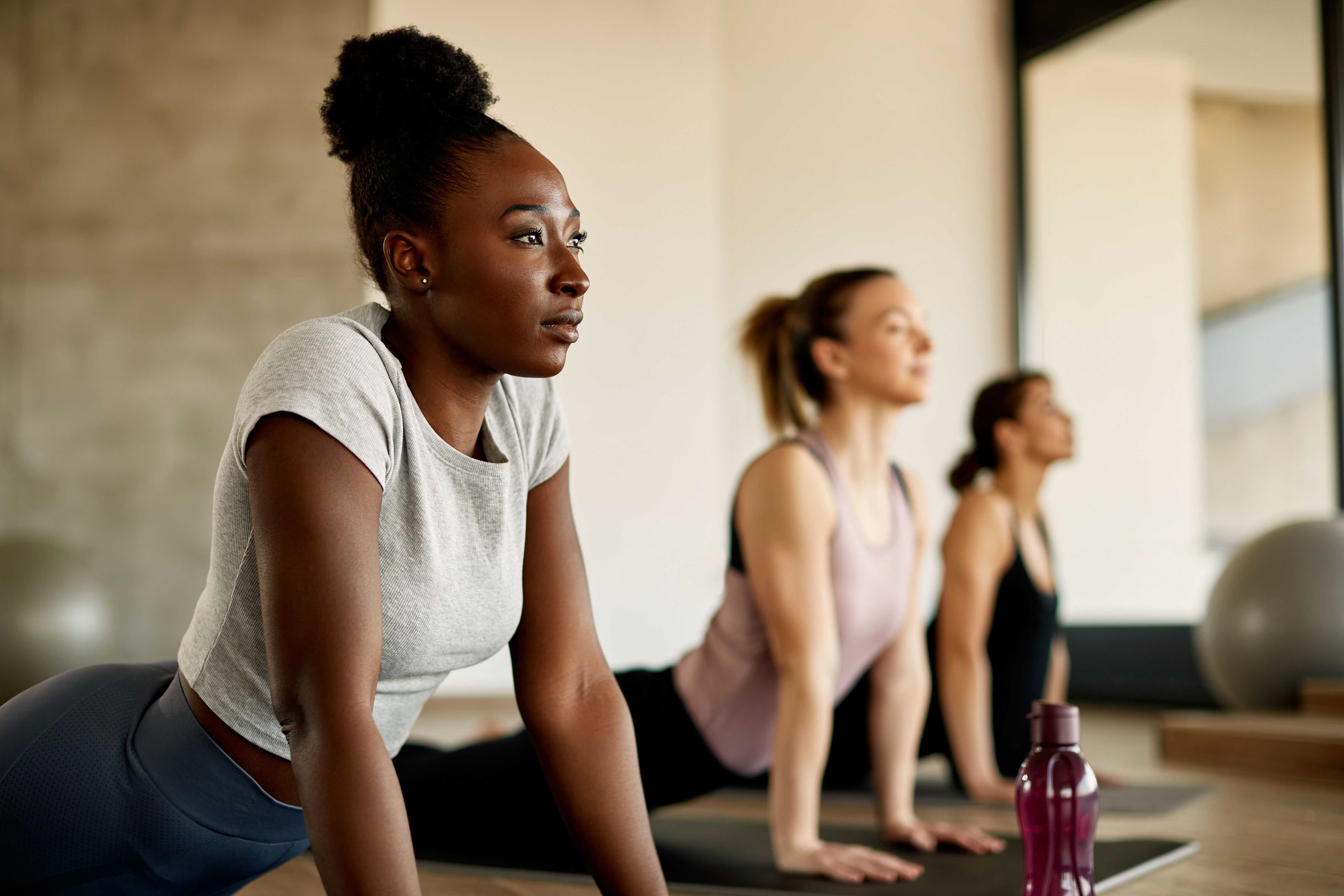Article
Static Stretching Before Exercise Can Support Blood Vessel Health
Author(s):
This type of stretching allows for faster tissue oxygenation after the workout and protects from exercise stress.
Passive (static) stretching before a run can protect vascular function, according to a study conducted by investigators at the University of Wisconsin-La Crosse and presented at theAmerican Physiology Summit in Long Beach, California.1
stretching during exercise class at health club: © Drazen - stock.adobe.com

“The most recent studies say that [static stretching] is … a very effective way to stretch and increase the range of motion of a joint,” said Anne Rex, DO, in an interview with Cleveland Clinic. “It can be used in a short duration stretch as part of a complete dynamic warm-up.”2
The 2 main stretching techniques are static and dynamic stretching.2 Static stretching involvesholding the body in a position for an extended period and can require the assistance of a band, brace, or other tool.1 Dynamic stretching is when a person actively and repetitively moves the joints and muscles in certain movement patterns that mimic the activity/exercise you plan on doing, according to Rex.2
In recent years, there is plenty of debate about the best type of stretching to do prior to exercise, as well as whether stretching is even necessary.1,3 Previous studies have found that passive stretching dilates the arteries and improves blood flow to the muscles.3 In effect, muscle cells can use the oxygen to generate more energy, which can allow for better performance in the form of endurance and strength, along with maintaining young, healthy arteries.4
In the current study, investigators looked at the effects of passive vs. no stretching prior to cardiovascular activity on blood vessel health. The study included 16 college-aged men and women who were either asked to perform stretches in a group or placed in a sham-stretch control group. The stretching group put their foot in a splint to stretch the calf for 5 minutes, then rested for 5 minutes and repeated the routine 4 times.1
Following the stretch/sham-stretch, investigators measured participants’ blood vessel function then had them run at 65% maximum effort for 30 minutes. Post-exercise, investigators measured blood vessel function again.1
The stretching group had been able to restore tissue oxygenation to levels that were like those prior to the run; the control group was not able to restore oxygen to the tissue quite so easily. In addition, the stretching group’s blood levels widened and adapted to the increased blood flow caused by the exercise.1 Study investigators have speculated regarding whether passive stretching could even be used as a nondrug treatment for improving blood vessel health in individuals with vascular disease.3
“Intermittent passive stretch is easy to perform, cost friendly and [is a] powerful tool that should be considered by individuals aiming to improve their blood vessel health or protect them from exercise stress,” said lead study author Jacob Caldwell, PhD, in the press release.1
References
1. American Physiological Society. Passive Stretch before Cardio Protects Blood Vessel Health. News Release. April 21, 2023. Accessed on April 21, 2023. https://www.physiology.org/professional-development/meetings-events/american-physiology-summit-2023?SSO=Y
2. Cleveland Clinic. Understanding the Difference Between Dynamic and Static Stretching. News Release. May 29, 2020. Accessed on April 21, 2023. https://health.clevelandclinic.org/understanding-the-difference-between-dynamic-and-static-stretching/
3. Harvard Health. Stretching may improve blood vessel health. News Release. October 1, 2020. Accessed on April 21, 2023. https://www.health.harvard.edu/heart-health/stretching-may-improve-blood-vessel-health
4. Harvard Health. Exercise and your arteries. News Release. June 21, 2019. Accessed April 21, 2023. https://www.health.harvard.edu/heart-health/exercise-and-your-arteries#:~:text=Exercising%20muscles%20need%20more%20blood,use%20oxygen%20to%20generate%20energy.






